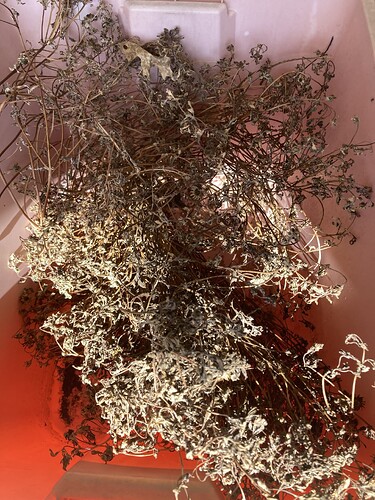I spent the last 4 days digging up and moving my extra wood chip piles and spreading them across the garden. Wore me out, I must be getting old as I fell asleep all afternoon after finishing it all. ![]()
Some updates on the garden.
Watermelons forming.

Sweet potato still trying to keep its head above an ocean of watermelon vines.
Watermelon not satisfied with covering all the ground wants to escape up the fence.
The corn that decided to germinate and grow is now starting to split off from the main stalks.
Absolutely good news on the 1951 and 1965 USDA accession beans. New leaves are not malformed. What I originally though might be signs of DNA damage in long term storage seems to be extra hard seed coats on germination causing damage to the cotyledons but the new growth seems good. I have also top dressed them with wood chips and move them back over the rows. No further germination signs are appearing and no germination at all from the 1966 USDA accession beans.
Reckless Pepo Squash got top dressed.
Here you see the stunted squash still around.
and after top dressing now you don’t. I buried it under the wood chips to remove it from the landrace seeds this season.
Rest of the Reckless Pepo doing good and continuing to develop.
I harvested the first India Kajari melon. This was a sneaky one. It showed yellow from looking top down. After I cut the vine I noticed the green on the top facing the ground. It had the aroma but needed a few more days to develop full sweetness.
I would also like to see the seeds already fallen out of the netting and laying in a sweet pile of juices.
But seeds were what I was after so I was not disappointed.
Here they are laid out to dry after fermenting a few days in water. I removed the floaters and then removed any bent or funny shaped sees then toweled them out on the heat mat for drying down for the next week.





















































